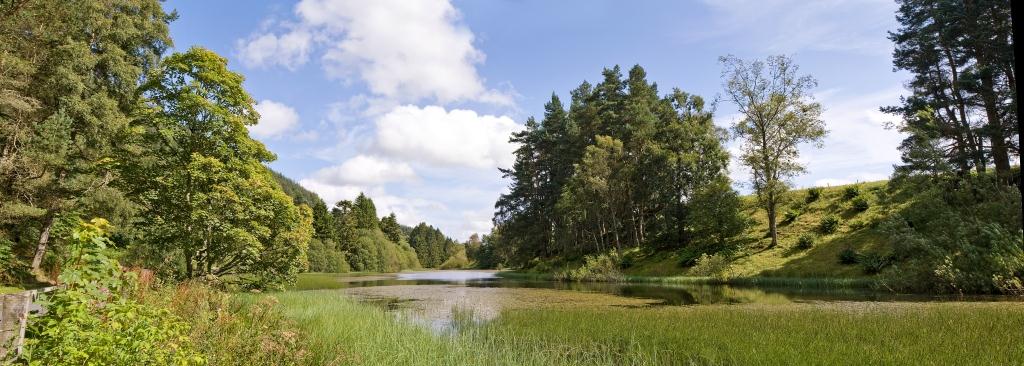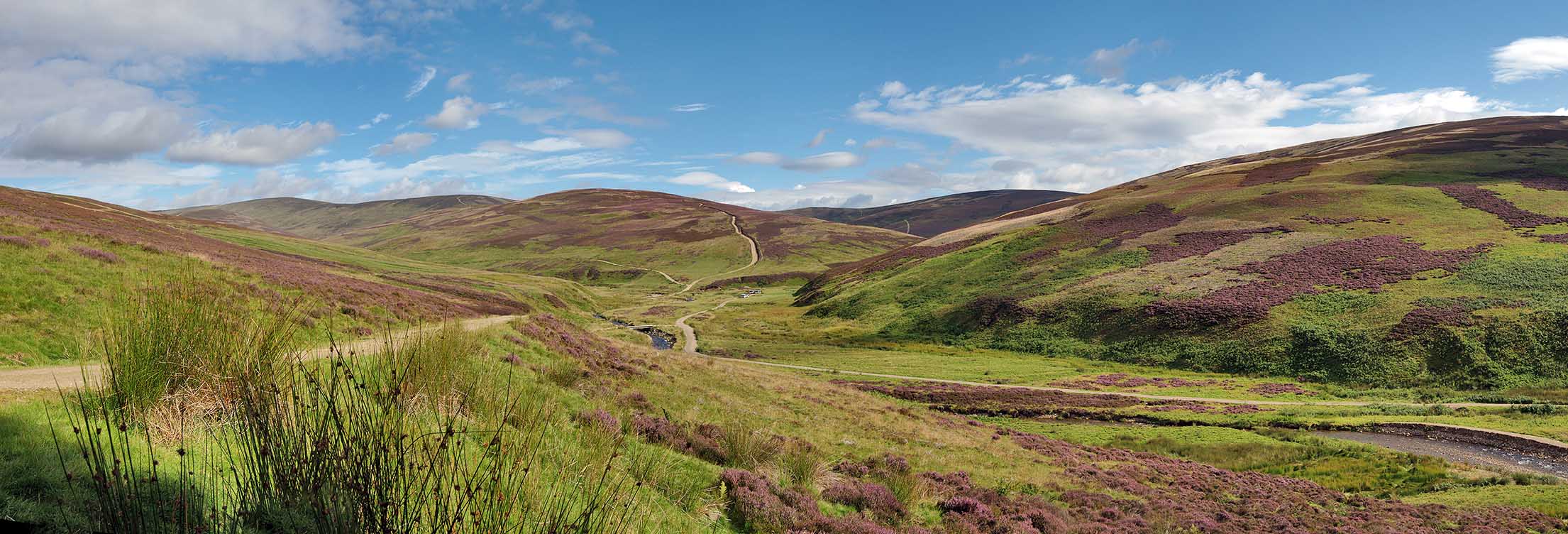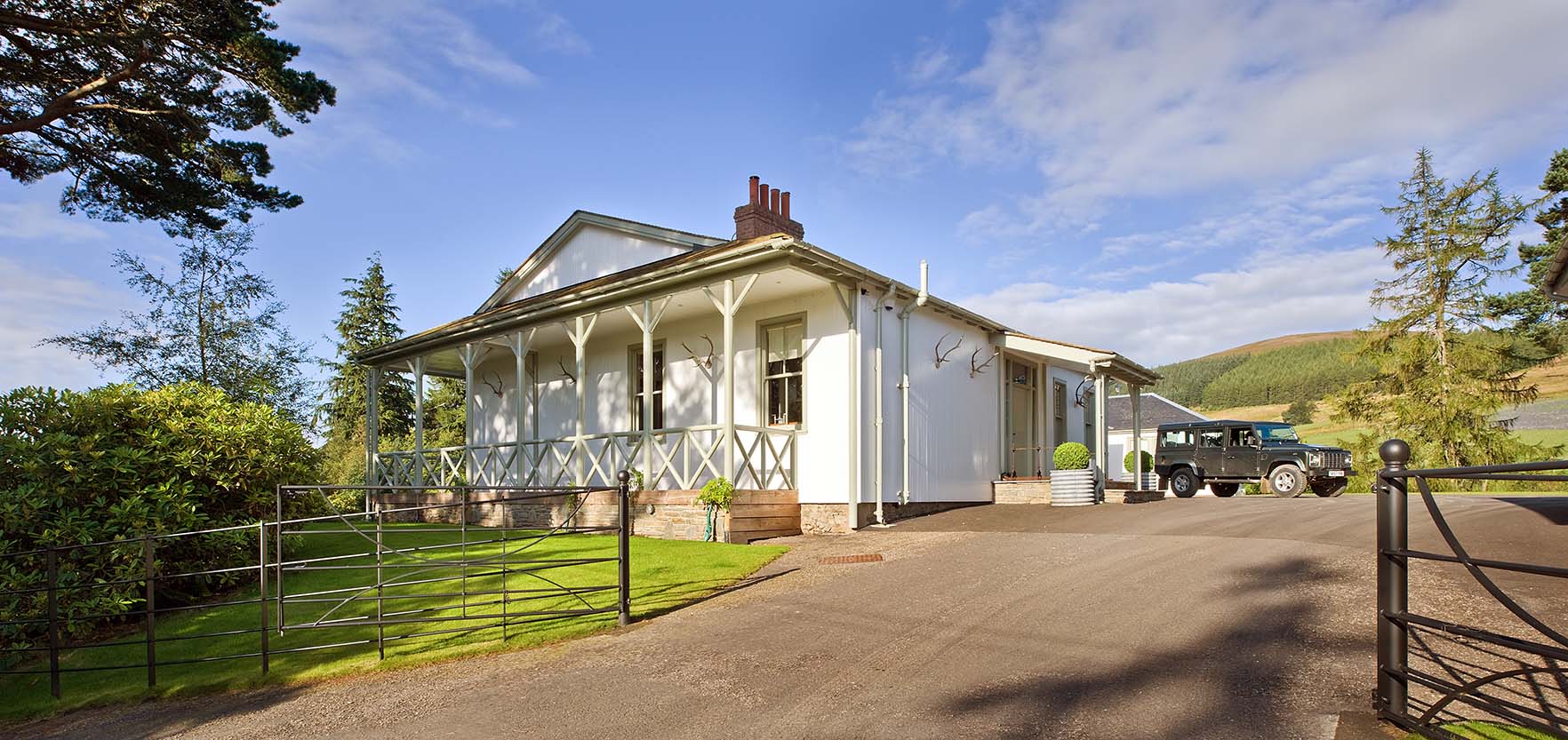The Game Conservancy Deutschland, in Cooperation with the HAWK in Gottingen (University of applied sciences and art) and students from several German universities began environmental studies at Glenogil Estate, Angus in April 2015.
The the first two years were concentrated on understanding the ecosystem (grouse moor) with all it’s different parts and habitat diversity. We described the bird fauna in a species list with special attention paid to the habitat use by those species. So far we have recorded at least 103 bird species on Glenogil estate, an immense figure. Not all species of course breed on the estate but they do use the area frequently for foraging or resting during migration.
Typical of large parts of the estate is the abundance of heather moor but also several natural flowing burns in grass dominate valleys. At first sight these moors seem to be lacking in species but in fact they are highly diverse. To facilitate this diversity the burning of old heather in small mosaics within the landscape is in an important management tool, enabling breeding and feeding habitats not only for Grouse but also for many other species. For example the mice hunting short-eared owl favours low and jagged vegetation.
For waders such as Curlew, we proved that the early stages of heather growth are the most important feeding and breeding habitats.
Habitat management including the grazing of sheep, runs parallel to legal predator control and is an important tool to maximise higher densities in endangered species. To prove the positive influence of both habitat and predator management we started further investigations in 2017.
During the breeding season of 2017 more than 30 waders nests such as Oystercatcher, Golden Plover, Lapwing and Curlew where equipped with game cameras and thermologgers. The loggers are placed in the nests and they record date, time and temperature, so after the nesting period we are able to read the information in order to asses if a clutch was lost or if indeed the brood was successful. In combination with the cameras we are able to take a precise view about the hatching success and any causes of loss. So far there is not enough data to give an informed statement but from the first observations the hatching success seems to be very high in comparison to other areas.
Since 2016 we also focused heavily on mountain hares and have now established different counting areas. For the night countings, thermal cameras were used and we repeated the work every spring and late summer in order to gain figures about the breeding success. In 2017 we are seeing that the mountain hares on Glenogil have almost tripled in population. This success rate is extraordinary high and exceeds breeding success by the European brown hare, monitored on more than 450 German investigation areas.
With our partners from the research institute for wildlife ecology at the University of Veterinary Medicine in Vienna, the next step is to work on the health and the immune system of the mountain hares. With all the data we will be able to discuss the sustainability of use and give advice on how to make conservation most effective.
In 2017 we determined 10 sites each 1km2 where further investigations will start. Each year we make drone flights to have the actual face of the landscape clearly marked. With special methods we are able to measure the changing activity of animals & birds depending on the landscape structure. Counting with standard ecological methods to have exact information about their densities will also be carried out.
On these sites we sill survey how the vegetation, insects and small mammals develop. This will also be determined with systematic methods.
Density and Availability of nutrition can be seen as another key factor in breeding.




